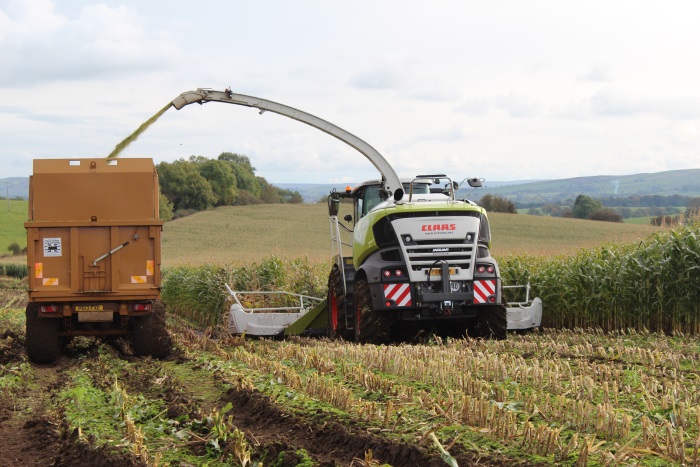The welcome news of some high quality maize silage needs to be tempered by the continued impact of this year’s forages on rumen health according to Trouw Nutrition GB who also warn against opening clamps too early.
The maize season was very unusual with late planted crop following the wet spring having to cope with a significant drought in the summer. Slow growing crops then matured very quickly with the first maize reportedly cut before the end of August.
Reflecting the season, samples have been coming in sooner than usual but Dr Liz Homer, ruminant technical development manager says worryingly over 15% of samples were inadequately fermented, suggesting a rush to get the feed into diets driven in part by reduced overall forage stocks.
“It is important that maize is correctly fermented in order to optimise milk yields and cow health,” she explains. “Feeding incompletely fermented crops should be resisted. The fermentation will be unstable increasing the risk of spoilage while any analysis will not be representative of the final feed.
Overall, the results for the first 500 samples analysed by the company show generally good feed values. Dry matters are averaging 32.8% with a higher proportion of drier crops which is a consequence of the excellent weather at harvest. Energy measures are good with 11.7MJ/kgDM and 31% starch. NDF and lignin levels are lower. Starch degradability is the same as in 2017 but as starch content is higher overall, there is an increase in bypass starch.
“The headline figures show that some good maize silage has been made and in crops that have completed fermentation, the characteristics of the fermentation are good,” Dr Homer continues. “However, when we look at how the forage may perform in the rumen it is clear careful balancing will be needed to maintain good rumen health.”
Dr Homer explains that the acid loading of both grass and wholecrop silage this year have been higher than usual. Maize also has a high acid load, in part due to increased starch levels and high starch degradability. Low lignin content means that overall maize could be more digestible.
“The outcome is that maize is high in rumen fermentable carbohydrates which will contribute to diet acid loading. Farmers and nutritionists will need to watch acid loading careful and it may be prudent to replace cereals with more fibrous energy sources like soya hulls to help balance the rumen.
“While rumen fermentable carbohydrates are high, the level of rumen fermentable protein is low making it necessary to consider including other rumen fermentable protein sources like rape and soya to ensure the optimum balance of energy and protein in the rumen.
Dr Homer urges all farmers to get maize silage analysed once fermentation is complete and clamps are stable. “Maize has the potential to contribute significantly to diets this winter but it is essential to understand the feeding characteristics of your own crop and balance the diet accordingly.”


